This article was medically reviewed by Luba Lee, FNP-BC, MS. Luba Lee, FNP-BC is a Board-Certified Family Nurse Practitioner (FNP) and educator in Tennessee with over a decade of clinical experience. Luba has certifications in Pediatric Advanced Life Support (PALS), Emergency Medicine, Advanced Cardiac Life Support (ACLS), Team Building, and Critical Care Nursing. She received her Master of Science in Nursing (MSN) from the University of Tennessee in 2006.
This article has been viewed 35,616 times.
Cold urticaria is an allergic skin reaction to cold temperatures. It can be triggered by exposure to cold weather, cold water, ice, and even cold food and beverages. Symptoms of cold urticaria include a temporary reddish, itchy skin rash (hives), swollen hands, swollen mouth / throat and, in severe cases, anaphylaxis — a full-body life-threatening allergic reaction.[1] Severe forms of cold urticaria can be fatal. The cause of cold urticaria is unknown and its severity varies widely from person to person. The condition can usually be managed at home by avoiding cold temperatures, including cold food and beverages, although sometimes medical treatment is necessary.
Steps
Dealing with Cold Urticaria at Home
-
1Avoid cold weather conditions. If you've noticed that your skin develops an itchy rash when it's chilly, then the best precaution is to not expose yourself to cold weather conditions. This can be a challenge in northern climates, but making sure you're always dressed warmly during winter months can help a great deal.
Layer your clothes and try to wear natural breathable fibers, such as cotton and wool. Always wear gloves and don't forget to cover your neck and face with a scarf.- Cold urticaria symptoms typically begin soon after skin is exposed to a sudden drop in air temperature — the majority of reactions are triggered by temperatures lower than 39°F.[2]
- Damp (humid) and windy conditions seem to increase the risk and severity of cold urticaria.
- Everybody with cold urticaria has different temperature thresholds, so some can get triggered by temperatures warmer than 39°F.
-
2Don't swim in cold water. Swimming in cold water is the most common cause or trigger of cold urticaria, particularly during windy conditions.[3] Typically the worst urticaria reactions occur with swimming in cold water because so much skin is exposed to the cold.
Such a full-body reaction can lead to a massive release of histamine from skin cells, which leads to sudden hypotension (low blood pressure), dizziness, loss of consciousness and even drowning while in the water.[4] If you have this condition, avoid swimming in natural bodies of water or unheated swimming pools.- As a general guideline, if water gives you goose bumps or causes you to shiver, then do not submerge yourself in it if you have (or think your have) cold urticaria.
- The same information holds true for bathing at home. Avoid cold or even lukewarm showers and baths. Let the shower runs for a few minutes and make sure it's warm enough before jumping in.
- Symptoms of cold urticaria usually appear between 5-30 minutes after cold exposure and they can last for up to 48 hours.[5]
Advertisement -
3Be cautious with cold drinks and foods. Another activity that can trigger cold urticaria is holding and/or drinking cold beverages.
Holding a cold drink (particularly one that contains ice) can trigger a very itchy rash and swelling in your hand, whereas drinking a cold liquid can cause similar symptoms to your lips, tongue, throat and esophagus.[6]
This can be dangerous because it can make breathing difficult and choking more likely. As an allergic reaction, cold urticaria causes the same symptoms as severe food allergies do.- Avoid iced, slushy and blended drinks, and don't offer to hold them for your friends or family unless you're wearing gloves.
- Try to avoid ice cold foods, such as ice cream and protein shakes made with ice.
- Be very cautious of taking drinks (or food) from the fridge / freezer with your bare hands. Use a towel or cloth before grabbing any cold items.
- In most cases, it's not actually the coldness that directly causes the skin reaction — it's the rewarming phase of the skin that seems to trigger the itchy and burning rash.
-
4Take over-the-counter (OTC) antihistamines. The main mechanism that causes allergic reactions, such as cold urticaria, is the release of histamines from mast cells located in skin, connective tissue and the linings of your mouth / throat.[7] Histamine triggers dilation (relaxation) of blood vessels, which in term leads to inflammation and reduced blood pressure. Antihistamines are medications that block the symptom-producing release of histamine.
- OTC antihistamine drugs that don't cause drowsiness include loratadine (Alavert, Claritin), cetirizine (Zyrtec) and levocetirizine (Xyzal).
- For most people with cold urticaria, OTC antihistamines aren't strong enough to make much of an impact, either preventatively or as a treatment.
Getting Medical Treatment for Cold Urticaria
-
1Consult with your doctor. If you notice your skin reacting to cold temperatures or water, then make an appointment with your family doctor or get a referral to a skin specialist (dermatologist).
Cold urticaria is diagnosed by placing an ice cube on your skin for about 5 minutes.[8] If you have the rare condition, a raised, red bump (hive) will form on your skin a few minutes after the ice cube is removed.- This process suggests that exposure to cold is required, but hive formation actually occurs as the skin temperature rises after the ice is removed.[9]
- Those who don't have cold urticaria usually experience redness on their skin during the 5-minute exposure period, but it disappears soon after taking the ice away and doesn't develop into hives.
- Sometimes cold urticaria is caused by an underlying condition that impacts your immune system, such as pneumonia, hepatitis or cancer.
-
2Ask about prescription antihistamines. Although there is no cure for cold urticaria, medications such as prescription-strength non-drowsy antihistamines can certainly help.
In particular, the newer H1 receptor blockers may be very effective.[10] Research indicates that mega-dosing H1 receptor blocking antihistamines (up to 4x the standard dose) is much more effective in reducing symptoms in cold urticaria than standard-dose treatment.[11] Talk to your doctor about the most appropriate dosage for you.- Prescription antihistamines used to treat cold urticaria include cyproheptadine (Periactin), fexofenadine (Allegra), desloratadine (Clarinex) and ketotifen (Zaditor).
- Cyproheptadine also affects nerve impulses that can lead to cold urticaria symptoms.
- Omalizumab (Xolair) is a strong antihistamine normally used to treat asthma, but it seems effective for cold urticaria also.
-
3Consider other medications. Prescription antihistamines are the primary medications used to treat cold urticaria, but other types of drugs are sometimes used "off-label" for the condition.
For example, doxepin (Silenor) is normally used to treat anxiety and depression, but it can also be helpful in reducing cold urticaria symptoms.[12] Other drugs that can be helpful for treating cold urticaria include epinephrine and cetirizine, which has antihistamine-like effects.- Doxepin is a tricyclic antidepressant that can also effectively block histamine release from mast cells.
- Epinephrine, also called adrenaline, is typically used to treat or combat anaphylaxis, cardiac arrest and severe asthma. It's given intravenously or by injection.
- Oral corticosteroids and antibiotics also can be used as a part of the treatment.
- Ask your doctor about epinephrine "pens" or auto-injectors (Epipen, Auvi-Q), which can be kept close by in case of severe symptoms of cold urticaria.
References
- ↑ http://www.mayoclinic.org/diseases-conditions/cold-urticaria/basics/symptoms/con-20034524
- ↑ http://www.mayoclinic.org/diseases-conditions/cold-urticaria/basics/symptoms/con-20034524
- ↑ http://www.mayoclinic.org/diseases-conditions/cold-urticaria/basics/symptoms/con-20034524
- ↑ https://clinicaltrials.gov/ct2/show/NCT01580592
- ↑ http://rarediseases.org/rare-diseases/urticaria-cold/
- ↑ http://rarediseases.org/rare-diseases/urticaria-cold/
- ↑ http://www.mayoclinic.org/diseases-conditions/cold-urticaria/basics/causes/con-20034524
- ↑ http://www.mayoclinic.org/diseases-conditions/cold-urticaria/basics/tests-diagnosis/con-20034524
- ↑ http://rarediseases.org/rare-diseases/urticaria-cold/
About This Article
To deal with cold urticaria at home, take over-the-counter antihistamines like Alavert, Zyrtec, or Xyzal to prevent the dilation of your blood vessels. When your blood vessels are dilated by histamines, you may experience symptoms including hives and inflammation or swelling of the skin exposed to the cold. These symptoms may last up to 48 hours, and can even be triggered by simply holding or consuming cold food or drink! You can prevent future flare-ups by avoiding cold temperatures below 39 degrees Fahrenheit, since this temperature seems to trigger symptoms. If you have to go outside in the cold, wrap up in warm layers to protect your skin. Before you handle cold drinks or food, grab a towel or use some gloves to stop the cold from touching you. For more advice from our Medical co-author, including how to avoid cold urticaria when swimming, keep reading!
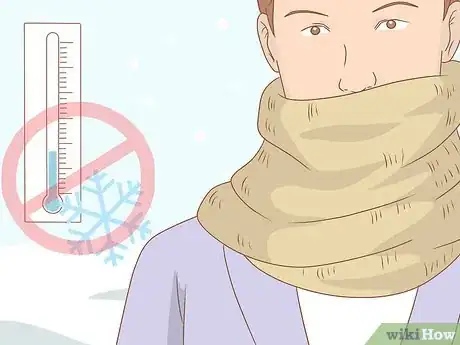
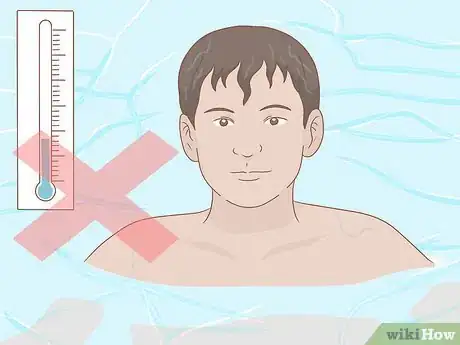


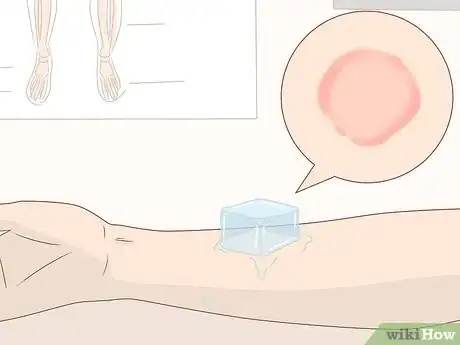
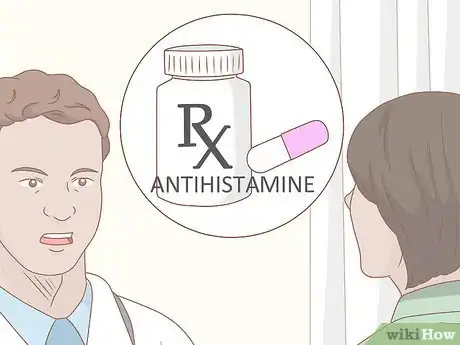

-Step-11-Version-2.webp)
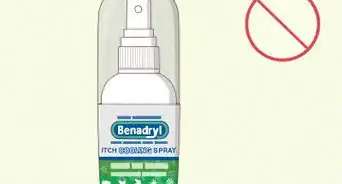


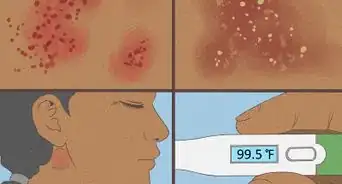














-Step-11-Version-2.webp)
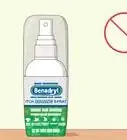





































Medical Disclaimer
The content of this article is not intended to be a substitute for professional medical advice, examination, diagnosis, or treatment. You should always contact your doctor or other qualified healthcare professional before starting, changing, or stopping any kind of health treatment.
Read More...